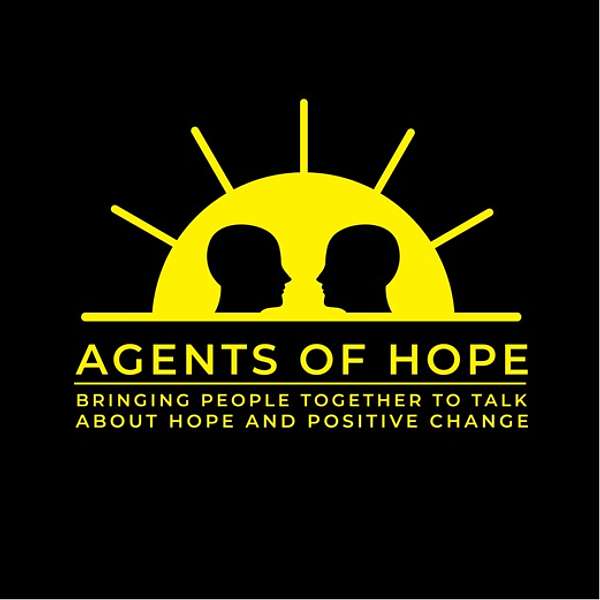
Agents of Hope
Agents of Hope
An Authentic Gender Journey with Dr Cora Sargeant
The first episode of the Understanding Voices mini-series with me, Ella Mansfield. In this episode, I talk to Dr. Cora Sargeant, an Educational Psychologist and Academic and Professional Tutor for the initial EP training programme at the University of Southampton.
Cora and I discuss gender and alternatives to the bimodal system of male and female identities. She discusses her personal gender journey as a transgender woman and talks about how her experiences influence her practice as an Educational Psychologist. We discuss what gender is and how it can be defined. Cora highlights the societal barriers that non-binary and transgender people face and we talk about how these may arise within educational settings. We conclude by discussing how EPs and other professionals working with children and young people can challenge the status quo and improve the experiences of all children through inclusive practice.
Related reading:
Bragg, S., Renold, E., Ringrose, J., & Jackson, C. (2018). ‘More than boy, girl, male, female’: Exploring young people’s views on gender diversity within and beyond school contexts. Sex Education, 18(4), 420–434. https://doi.org/10.1080/14681811.2018.1439373
Fast, Anne & Olson, Kristina. (2017). Gender Development in Transgender Preschool Children. Child Development. 89. 10.1111/cdev.12758. (https://srcd.onlinelibrary.wiley.com/doi/full/10.1111/cdev.12758)
Gülgöz, S., Glazier, J., Enright, E., Alonso, D., Durwood, L., Fast, A., Lowe, R., Ji, G., Heer, J., Martin, C., & Olson, K. (2019). Similarity in transgender and cisgender children’s gender development. Proceedings of the National Academy of Sciences. 116. 201909367. 10.1073/pnas.1909367116.
Hyde, J. S., Bigler, R. S., Joel, D., Tate, C. C., & van Anders, S. M. (2019). The future of sex and gender in psychology: Five challenges to the gender binary. American Psychologist, 74(2), 171–193. https://doi.org/10.1037/amp0000307
Martin, C. L., Andrews, N. C., England, D. E., Zosuls, K., & Ruble, D. N (2017). A dual identity approach for conceptualizing and measuring children’s gender identity. Child Dev. 88, 167–182. doi: 10.1111/cdev.12568.
Meyer-Bahlburg, H., Dolezal, C., Baker, S., Carlson, A., Obeid, J., & New, M (2004) Prenatal androgenization affects gender-related behavior but not gender identity in 5-12-year-old girls with congenital adrenal hyperplasia. Arch. Sex. Behav. 33, 97–104. (https://www.researchgate.net/publication/8560291_Prenatal_Androgenization_Affects_Gender-Related_Behavior_But_Not_Gender_Identity_in_5-12-Year-Old_Girls_with_Congenital_Adrenal_Hyperplasia)
Olson, K. R., Key, A. C., & Eaton, N. R. (2015). Gender cognition in transgender children. Psychological Science, 26(4), 467–474. https://doi.org/10.1177/0956797614568156
Rae, J. R., Gülgöz, S., Durwood, L., DeMeules, M., Lowe, R., Lindquist, G., & Olson, K. R. (2019). Predicting early-childhood gender transitions. Psychological Science, 30(5), 669–681. https://doi.org/10.1177/0956797619830649
Read, J., Sargeant, C., & Wright, S. (2020). What beliefs influence children and young people’s attitudes towards the transgender population? Educational and Child Psychology, 37(1), 11–36.
Russell, S. T., Pollitt, A. M., Li, G., & Grossman, A. H. (2018). Chosen name use is linked to reduced depressive symptoms, suicidal ideation, and suicidal behavior among transgender youth. Journal of Adolescent Health, 63(4), 503–505. https://doi.org/10.1016/j.jadohealth.2018.02.003
Vasey, P.L., & Bartlett, N.H. (2007). What Can the Samoan "Fa'afafine" Teach Us about the Western Concept of Gender Identity Disorder in Childhood? Perspectives in Biology and Medicine 50(4), 481-490. doi:10.1353/pbm.2007.0056.